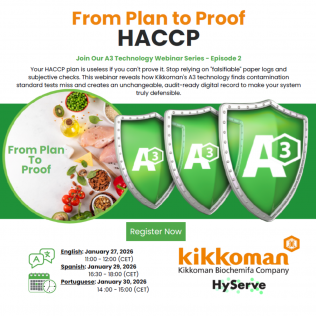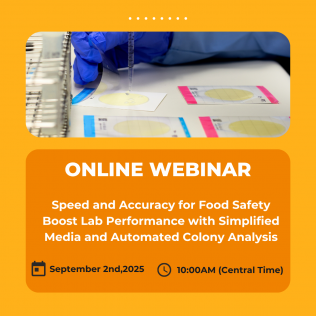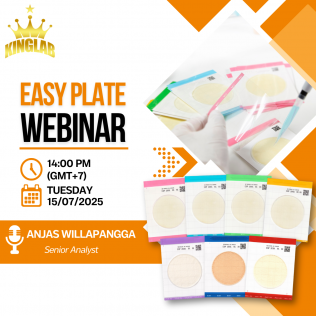
Outline
| Product | ATP Test (Kikkoman A3): LuciPac A3 Surface, LuciPac A3 Water, LuciPac A3 Pre-moisten,Easy Plate, |
|---|---|
| Event date | 2024.06.13 |
Seminar Detail
| Venue | Lincon, United Kingdom |
|---|
Result contents
Dr Stephan Speidel
Scientific Advisor at HyServe GmbH
Dr. Stephan Speidel, with a distinguished career that spans over four decades, stands at the forefront of innovation as the founder and senior advisor of Hyserve. Before laying the foundations of Hyserve in 2002, Stephan honed his expertise in international roles within the Big Pharma sector, an experience that endowed him with a broad perspective and deep understanding of global health and safety standards. Notably, his doctoral studies were characterized by establishing pivotal connections with Japanese research institutions, a testament to his commitment to fostering international scientific collaboration. Today, as a recognized industry expert, Stephan's influence extends beyond Hyserve. His profound insights and visionary leadership have been instrumental in steering Hyserve's focus towards pioneering solutions in hygiene management and quality control, firmly positioning the company as a beacon of innovation in the field.
Gabriel Linder
Managing Director at HyServe GmbH and Conscio Executive Board Member
With an extensive background in the Auditing, Testing and Inspection Industry, Gabriel has devoted nearly two decades to enhancing food safety and quality management systems. Serving as the former General Manager of Eurofins Global Control, he spearheaded initiatives to ensure the integrity of global supply chains. His leadership in the role involved direct oversight of quality management processes, ensuring clients adherence to international standards. Gabriel is actively involved in various industry-related boards and committees - such as Conscio Board of Directors - contributing his expertise to the advancement of food safety protocols. He is recognized for his significant contributions to the field, including authoring research on methodologies for improving food safety standards. Currently, Gabriel leads the HyServe team as it continues to grow and innovate in hygiene monitoring and food safety.
Dr Stephan Speidel
Scientific Advisor at HyServe GmbH
Dr. Stephan Speidel, with a distinguished career that spans over four decades, stands at the forefront of innovation as the founder and senior advisor of Hyserve. Before laying the foundations of Hyserve in 2002, Stephan honed his expertise in international roles within the Big Pharma sector, an experience that endowed him with a broad perspective and deep understanding of global health and safety standards. Notably, his doctoral studies were characterized by establishing pivotal connections with Japanese research institutions, a testament to his commitment to fostering international scientific collaboration. Today, as a recognized industry expert, Stephan's influence extends beyond Hyserve. His profound insights and visionary leadership have been instrumental in steering Hyserve's focus towards pioneering solutions in hygiene management and quality control, firmly positioning the company as a beacon of innovation in the field.
Gabriel Linder
Managing Director at HyServe GmbH and Conscio Executive Board Member
With an extensive background in the Auditing, Testing and Inspection Industry, Gabriel has devoted nearly two decades to enhancing food safety and quality management systems. Serving as the former General Manager of Eurofins Global Control, he spearheaded initiatives to ensure the integrity of global supply chains. His leadership in the role involved direct oversight of quality management processes, ensuring clients adherence to international standards. Gabriel is actively involved in various industry-related boards and committees - such as Conscio Board of Directors - contributing his expertise to the advancement of food safety protocols. He is recognized for his significant contributions to the field, including authoring research on methodologies for improving food safety standards. Currently, Gabriel leads the HyServe team as it continues to grow and innovate in hygiene monitoring and food safety.
Related seminars
-

Event Overview
HyServe will be hosting an upcoming webinar as part of the A3 Webinar Series.
Dates and Times (CET):
- English Session: Jan 27, 2026 | 11:00-12:00
- Spanish Session: January 29, 2026 | 16:30 – 18:00
- Portuguese Session: January 30, 2026 | 14:00 – 15:00
Are you confident your HACCP plan can move from a binder on a shelf to verifiable, audit-ready proof in seconds?
Managing food safety with manual logs and subjective visual checks is time-consuming, prone to errors, and difficult to defend during an audit. When a deviation occurs, how quickly can you "close the loop" to prove your corrective action was effective? Join our upcoming webinar to learn how to automate and strengthen your entire food safety program. We will explore how Kikkoman's A3 technology and the Lumitester App directly support the most critical "action" principles of HACCP—Monitoring, Corrective Actions, and Verification.
What You Will Learn
In this webinar, we will cover:
- Why Superior Sensitivity Matters: How Kikkoman's A3 technology (measuring ATP+ADP+AMP) finds contamination from processed or heated foods that standard ATP-only tests miss.
- Automate Monitoring (Principle 5): Move from subjective "visual checks" to objective, numerical RLU data for a consistent standard of "clean".
- "Close the Loop" on Corrective Actions (Principle 6): Use real-time results to trigger an immediate corrective action (re-clean) and instantly re-test to verify it was successful.
- Achieve Total Accountability (Principle 7): Eliminate "messy, error-prone, and falsifiable" paper logs. See how every test is automatically saved to the cloud with the operator ID, time, date, and location, creating an unchangeable, audit-ready digital record.
- Verify Your System: Use the app's data to instantly identify sanitation trends, validate cleaning procedures, and prove your HACCP plan is working effectively.
Target Audience
- Quality Assurance Managers
- HACCP Coordinators
- Food Safety Professionals
looking to save time, reduce risk, and create a truly defensible food safety system.
Speaker Information
- Jorge E. Padilla
- Stella Maciel
-

- Event date
- 2025.09.03
- Product
- Easy Plate (AC, EC, CC, SA, YM-R,EB,AC-R)
- Venue
- Webinar
-

- Event date
- 2025.07.15
- Product
- Easy Plate (AC, EC, CC, SA, YM-R,EB,AC-R)
- Venue
- Webinar

